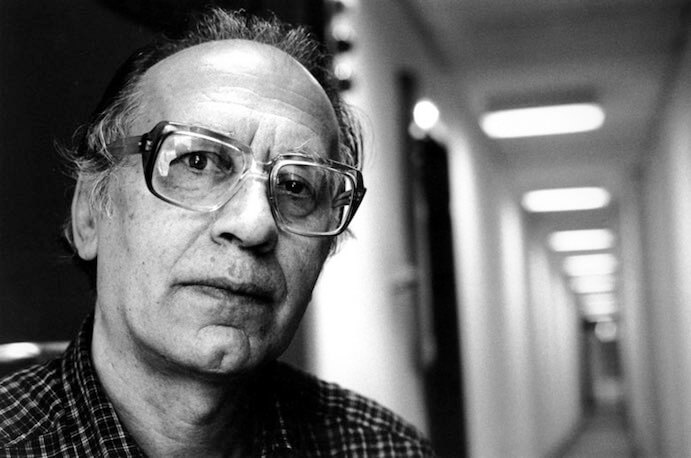Music should be so transparent that one can see the bottom and that poetry shimmers through this transparency. (Valentin Silvestrov)
Seldom in new music does such clarity shine through a composer’s writing as it does in Ukrainian great, Valentin Silvestrov. Hieroglyphen der Nacht, a portrait album of solo and duo cello works released on ECM Records, is an exquisite collection of pieces brought to life by Grammy-nominated cellist Anja Lechner in partnership with Agnès Vesterman in time for the composer’s 80th birthday. The German and French cellists came together in 2009 to play Silvestrov’s duo cello works at the Nostalghia Festival in Pozna, Poland, and formed a duo, sharing their appreciation of Silvestrov’s music together. Here, Silvestrov sheds labels in this set of works through his combination of bold gesture and glassy delicacy, embracing and incorporating traditional and modern principles of harmony, melody and texture.

Representative of Silvestrov’s more recent pieces, Drei Stücke is constructed from character piece forms, incorporating traditional sensibility with free lyricism. As Silvestrov’s associate Tatjana Frumkis describes in the liner notes, the duo pieces must be treated as “cello four-hands,” extending the abilities of a single player while sounding as one cello.
Lechner and Vesterman bring a tremendous sensitivity to 8.VI.1810…zum Geburtstag R.A. Schumann, one of the other duo sets written affectionately for Robert Schumann’s birthday. This set, along with Zwei Serenaden, and 25.X.1893…zum Andenken an P.I. Tschaikowskij, exemplifies what the composer has come to call his “metaphorical style,” in which he engages in metaphorical musical dialogues with the past. In Silvestrov’s own words, “My music is a response to and an echo of what already exists,” paying homage to the greats of music history while adding musical commentary and addendums. Fragments of familiar melodies emerge, greeted by Silvestrov’s nuanced, reflective understanding of history and his relationship to the past.
Lechner and Vesterman exquisitely capture this tantalizing display of past and present through impeccable blending and sensitivity. The duo could easily be mistaken for a single cello in Präludium “Geburt der Melodie,” the first movement of 25.X.1893…zum Andenken an P.I. Tschaikowskij. The rich warm sounds of each cellist seamlessly marry the exposed complexity and clarity of melodic line, creating an intimate conversation between Tchaikovsky and the composer.

One of the highlights of the album is the set of pieces entitled Elegie for solo cello and tamtams. Lechner artfully negotiates the cello lines, striking tamtams on either side of her to create a shrouded, fluid aura of sound. The first two movements are remarkably concise in comparison to the third movement, pointing to the Silvestrov’s use of shorter forms in recent years, though packing no less punch. The opening plucks and sustains of the first movement poignantly disintegrate into nothingness and reemerge as fragmented melodic arcs, making way for the plaintive elegance of the second movement. In the third movement, Lechner slices through the mist of the tamtams with biting cello phrases, creating lucidity and transparency in the midst of obscurity. The active, scurrying gestures are artfully punctuated by wispy, placid harmonics that almost seem to emerge from the tamtam.
Named “one of the greatest composers of our time” by Arvo Pärt and Alfred Schnittke, Silvestrov stands alone as a unique orchestrator of past and present, who gives a nod to the earlier traditions while commenting and rendering a style distinctively his own. Lechner and Vesterman’s shared appreciation for Silvestrov’s work radiates through their playing, displaying virtuosic nuance and exploring the extremes of fragility. Listeners would be amiss to overlook such a collection of pieces by this unsung hero of modernism and historical insight.
























